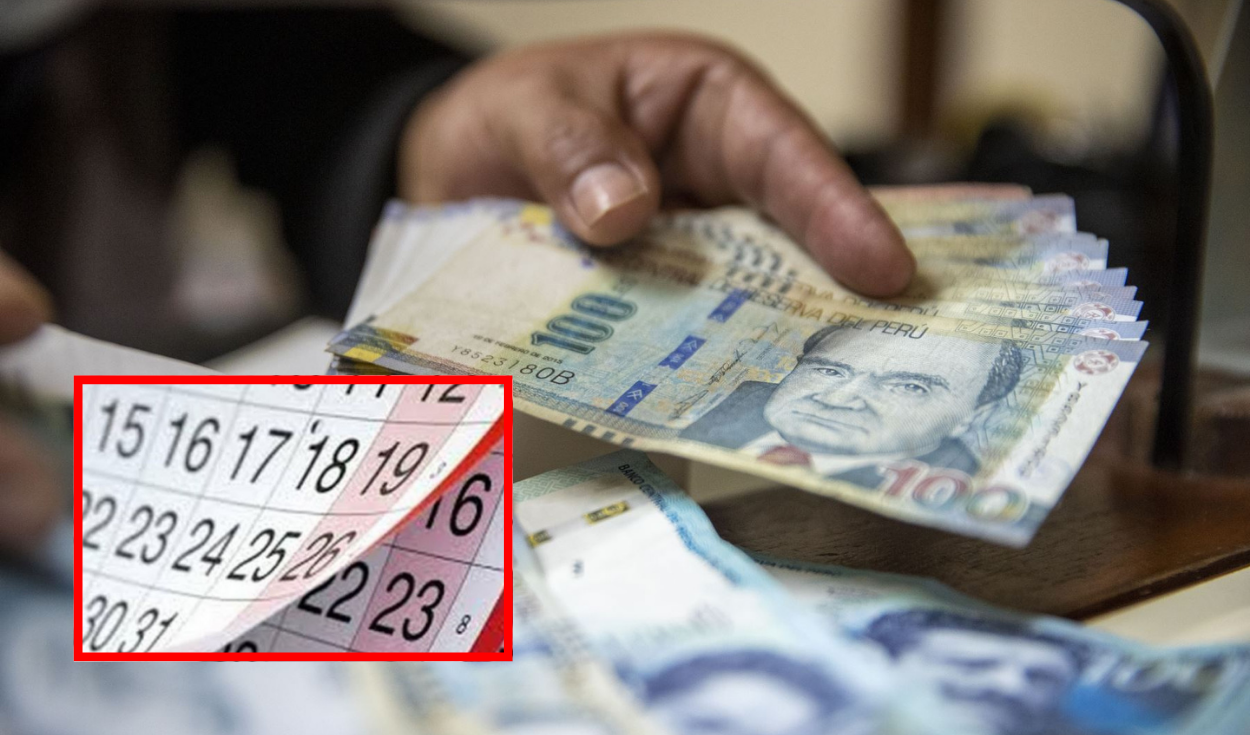
Service time compensation (CTS) represents a essential benefit For formal employees in Peru. This system, designed to ensure financial stability during unemployment periods, has been consolidated as a labor protection measure in the country.
Despite their importance, many workers are unaware of key details, such as the payment date, the calculation method and the conditions under which it can be embarked. Next, everything related to the CTS in 2025 will be explained, with details about the Payment datesthe criteria to receive this benefit, and how to make a correct calculation of the amount that corresponds to you.
To what date should the CTS be deposited in 2025?
In 2025, as in previous years, service time compensation is paid in two periods per year. Workers must be attentive to deposit limit dateswhich are May 15 and November 15 of each year. It is important to note that the amount is calculated based on the time worked during each semester, and is carried out in a bank account indicated by the worker.
The deposit is made until the indicated date, however, if the payment day falls on the weekend or holiday, the payment is made the next business day. In addition, the CTS is not paid in its entirety if the worker has not completed the minimum time worked during the semester, which implies that he will not receive the benefit until the next cycle.
These workers will not be able to receive their CTS in 2025
Although the CTS is a labor law of formal workers, not all employees have access to this benefit. According to current legislation in Peru, certain groups are not beneficiaries of the CTS. Among workers who do not receive this payment are included:
- Workers who work less than 4 hours a day.
- Microenterprise employees registered in Remype after registration.
- Those who perceive an annual integral remuneration.
- Workers who receive more than 30% of their salary for commissions or rates.
It should be noted that those who have not completed a full month of work at the close of a semester will not receive the CTS on that date. However, the hours worked will be added for the next semester, allowing them to receive the benefit in the following cycle.
How to calculate your CTS amount?
The calculation of the CTS in 2025 depends on several factors, such as the time worked and the worker’s salary. To obtain a precise estimate of the amount that corresponds to you, you can use the CTS calculatoravailable on official platforms. Next, we explain the steps to perform the calculation:
- Income date: You must enter the day, month and year in which you started working.
- Gross salary: The monthly gross salary that you perceive must be indicated, not including discounts.
- Computable working time: The CTS depends on the months worked. If you have only worked part of the semester, the calculation will be proportional.
- Family bonus: If you have children and a family bonus corresponds, this will also affect the final amount.
It is important to remember that the CTS is calculated proportionally to the time worked in the semester. If you work in a company with a special regime, the conditions for the calculation can vary slightly.
Can the CTS of a worker be seized?
Peruvian regulations establish that, under specific conditions, the CTS can be subject to embargo. However, this embargo is only possible in situations where there are food debts. In these cases, the retention of up to 50% of the deposited amount is allowed, always under a court order.
The embargo procedure begins with a judicial resolution authorizing the CTS retention. The company must notify the judge on the deposit and coordinate with the bank to carry out the embargo. It is important to note that this measure does not automatically apply to the CTS that is part of the liquidation of a worker who has ceased, provided that the payment period has not yet expired.
What other labor benefits obtain workers after their departure?
- Health coverage with ESSalud: The worker retains his health insurance for up to three months after finishing his employment relationship.
- Withdrawal of the CTS: If the employee has accumulated a compensation fund for time of services, he can withdraw this money by obtaining the proof of cessation.
- Unemployment insurance: Some employees have access to support programs for labor reintegration or temporary subsidies.
- Payment for vacations not enjoyed: if the worker has not taken his vacation, the employer must pay the corresponding amount for this concept.
Source: Larepublica
Alia is a professional author and journalist, working at 247 news agency. She writes on various topics from economy news to general interest pieces, providing readers with relevant and informative content. With years of experience, she brings a unique perspective and in-depth analysis to her work.












